For every story that makes it to print, there are scads that die in the reporting trenches. This is one of those stories. It originally ran in October 2013.
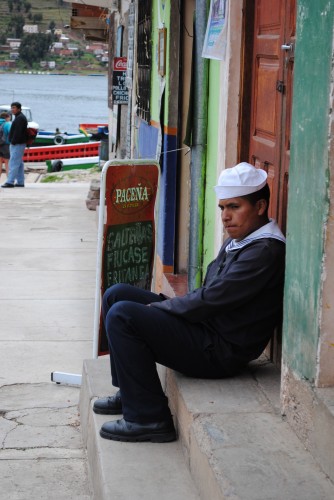
In 2001, I moved to Bolivia to become a Peace Corps volunteer and fell deeply in love with the country. In 2010, I returned. I wanted to visit friends and family, but, like any intrepid freelancer, I also hoped to do some reporting. Although Bolivia has been landlocked since it lost its coastline to Chile more than 130 years ago, the country still maintains a navy. This is their motto: “The sea belongs to us by right, recovering it is a duty.” I find this sentiment simultaneously ridiculous and sort of commendable. So why not do a story on Bolivia’s navy, I thought. (Well, lots of reasons. But I didn’t let details deter me.)
The first order of business was making contact. I found a Web page for the navy, but it seemed to be broken. And all other attempts to arrange an interview ahead of time failed. So I developed a two-part backup plan. 1. Fly to Bolivia. 2. Call the navy. And that’s exactly what I did. With help from the hostel desk clerk, I called naval headquarters. “Come on over,” said the man on the phone. So I hopped in a cab and went.
The Armada Boliviana has its headquarters in a nondescript 10-story building in La Paz, a city that lies nearly 12,000 feet above sea level and about 400 miles from the closest coast. I rolled up to the security gate, told them I was a journalist, and explained that I had an appointment. “Who are you here to see?” the security guard asked. Good question. Mistake number one: I had failed to get the name of the man who told me to show up. “Perhaps you’re here to see the Comandante General?” the guard asked. “Perhaps I am,” I said. Wrong answer. Men in Ray Bans and dark trench coats flooded out of the building. Their leader had a secret service earpiece. Confusion reigned as I tried to explain myself in increasingly flustered and broken Spanish. Finally I thought to give them the phone number the man had given me.
Twenty minutes later I found myself in a room with a naval officer named Ricardo. He seemed befuddled by my presence. “Would you like to go on a tour and see some of the sights of Bolivia?” he asked, handing me a brochure with a picture of a small cruise ship. I scanned the page. “Our attention is personalized so that you will feel quality and comfort similar to what you would feel in your own home, allowing you to enjoy your stay and absorb the energies of the sacred-mystic Lake Titicaca,” it read. Now I was befuddled. When did the navy start using its ships for tourist cruises? “No, I’m not here as a tourist,” I explained. “I’d like to do a story about the navy. I’d like to visit a naval base, and perhaps interview an official.”
And so it was arranged. I would return to La Paz on March 23rd for the big “Day of the Sea” celebration, when the country reflects on the terrible loss of its coast and proclaims vengeance on Chile. Ricardo would get me an interview with the Comandante General, the head of the navy. He walked me out of the building. “One last thing,” he said. “Would you like to have dinner?”
Would I? No, I wouldn’t. But I also didn’t want to jeopardize my interview with the Comandante. “Ok,” I agreed. “Let’s have dinner. You can tell me more about the navy.”
We met in the Plaza Murillo, and I could see immediately that I had miscalculated. Ricardo arrived in a navy blue blazer and a stifling cloud of aftershave. A gold chain glistened above the V of skin visible through his partially unbuttoned shirt. He kissed my cheek, and we hailed a cab. A few minutes later we arrived at the restaurant, and now there was no mistaking Ricardo’s intent. He had chosen a Chinese restaurant/dance club/karaoke bar called “Love City.” I’m not translating here. The name was in English. And that was how I found myself on a date with a married, fifty-something Bolivian naval officer.
Ricardo ordered tall beers and sweet and sour chicken (for the both of us) as I tried to put some professional boundaries on an evening that seemed suddenly out of my control. “Let me tell you about my husband.” “I am so interested in Bolivia’s navy.” “How nice that we can have dinner as professionals.” “Let me tell you more about my husband.” “Please tell me about your wife.” These tactics failed miserably. I tried a more direct message. “I am married and you are married, so there’s nothing between us except friendship,” I said. “We’re professionals.”
Ricardo adopted a wounded expression. “Are you losing confidence in me?” he asked. “I can’t believe that you think we came here for anything more. I have a wife!” he snapped. But soon his hand crept to my knee. I threatened to leave. Instead we ended up in the karaoke bar. “One song and then we’ll go,” he promised. He chose a ballad about unrequited love.
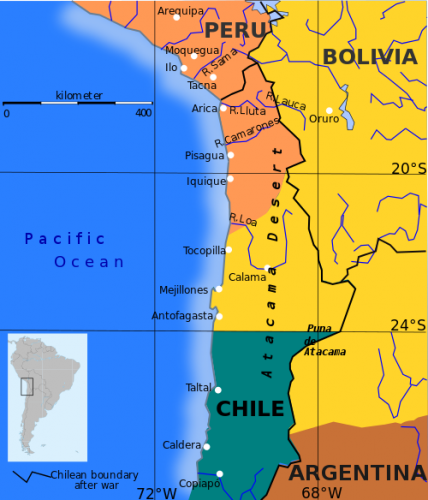
Bolivia lost its 400 miles of coastline in 1879 when Chilean forces occupied Antofagasta, the main city in a region rich in saltpeter. The invasion launched what became known as the War of the Pacific. “Bolivia was totally unprepared for war, especially one so distant from its population centers and resource base, and suffered from grossly irresponsible leadership,” writes Waltraud Q. Morales in A Brief History of Bolivia. In 1884, Bolivia signed a treaty ceding control of the coast to Chile. Another treaty in 1904 allowed Chile to annex the stolen property. This was more than a century ago, but Bolivians know how to hold a grudge. They never forgot the injustice, and diplomatic relations between the two nations have remained frosty ever since.
And they’re not likely to thaw any time soon. Bolivia has been demanding that Chile return its coastline for decades. And earlier this year, the country brought its grievances to the Hague.
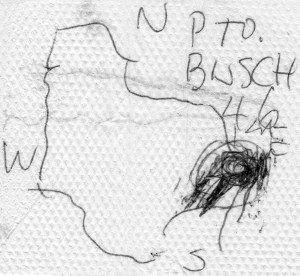
After six beers, three songs, and several attempted gropes, Ricardo offered his perspective on the issue. Because Bolivia’s eastern border butts up against the Rio Paraguay, which flows into the Paraná River, which flows into the Atlantic ocean, well . . . Bolivia already has a coast, he said. And then he drew me a diagram on a napkin. That rat’s nest of pen marks represents Bolivia’s 46-kilometer-long “coastline,” which boasts a barely populated outpost called Puerto Busch. By that logic, Bismarck, North Dakota, is a coastal city too.
The evening ended poorly. I grudgingly shared Ricardo’s cab. But when he offered to come up to my room, I declined. I did return to La Paz for Day of the Sea, but I couldn’t bring myself to phone Ricardo. I attended the parade alone, and never interviewed the Comandante. Instead I forced myself to do man-on-the-street interviews. (In English, I find these conversations merely uncomfortable. In Spanish, they were utterly humiliating.)
The Bolivians at the parade talked about the importance of having a seaport for exporting products, but they also lamented the loss they suffered in 1879. It still stings. “Before we had the Pacific Ocean, and now, no. It’s important to recover what was once ours,” said one woman.
I never wrote this story. I never even pitched it. But if I had, maybe this is how I would have ended it. It’s easy to poke fun at a landlocked navy. But Bolivians couldn’t be prouder of these men. In a country that has been fractured by protests, politics, and rampant racism, the sea is a uniting force and a symbol of hope. Life was better once, and it can be again . . . if only greedy Chile would give Bolivia back its goddamn sea.
***
There’s no shortage of stories on the Bolivian navy. My favorite lede comes from The Guardian: “Sunlight glinted off the lake, a scenic expanse on the roof of South America, and Bolivia’s navy was busy perfecting the art of yearning.” Find the full story here. Also see these:
Bolivian navy’s dream comes ashore
Landlocked navy prepares to put to sea
Bolivia Reaches for Slice of the Coast that Got Away
All photos by Cassandra Willyard except the map of Bolivia (courtesy of Wikimedia commons) and the napkin (courtesy of Ricardo)
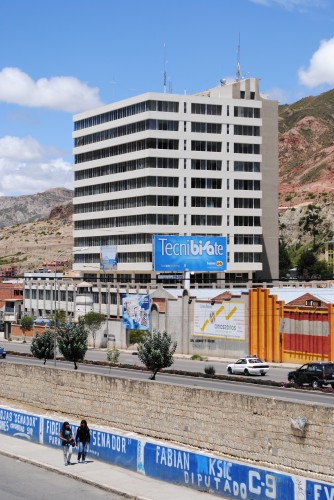
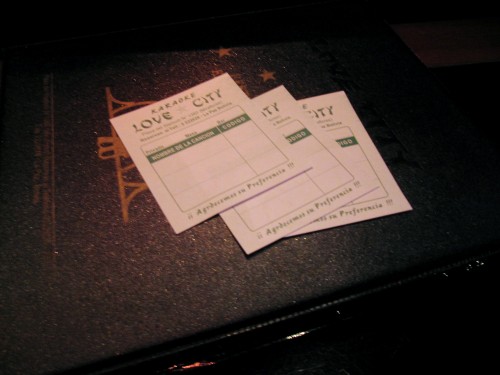
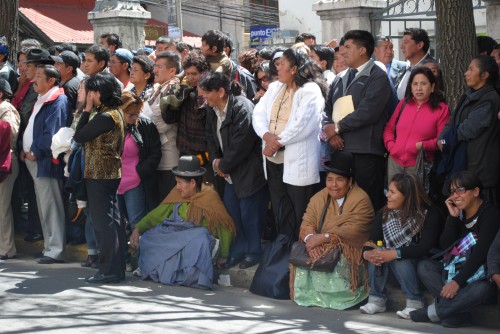
I love this story. Thanks for bringing it back!
One small correction. La Paz is nearly 4000 meters above sea level, not feet, big difference.
Darla, good catch! I’ve made the correction.